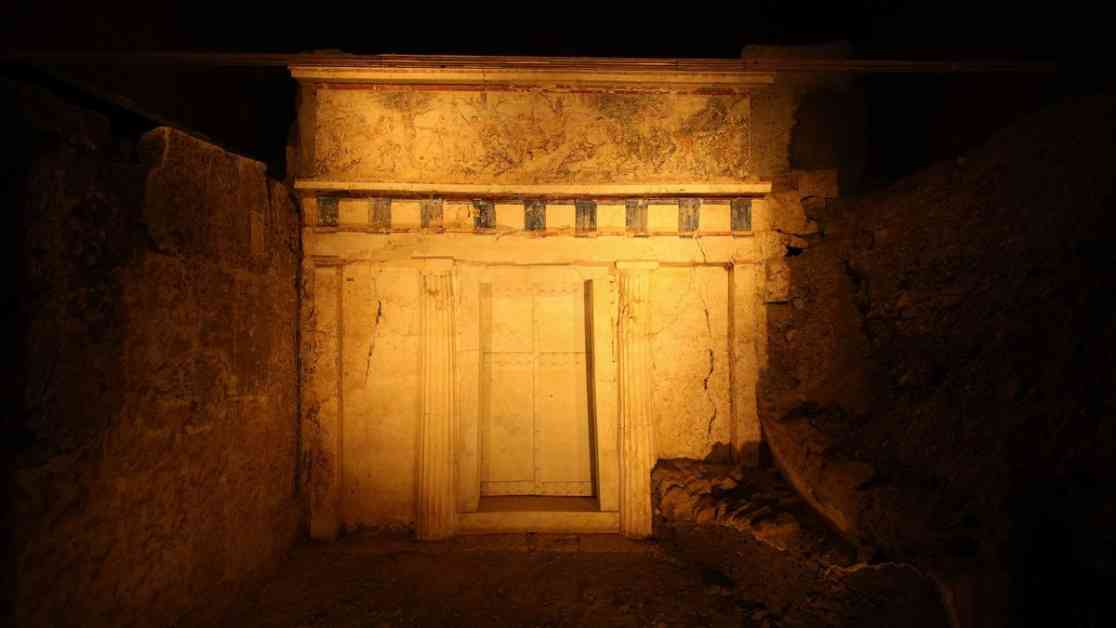A scholar claims that a tunic found in an ancient tomb in Greece belonged to Alexander the Great, sparking debate among experts. The tomb is believed to have belonged to Alexander’s father, Philip II, but the scholar argues it actually belongs to Alexander’s half-brother, Philip III (Arrhidaeus).
The study suggests that the cotton cloth found in the tomb was once part of a tunic worn by Alexander himself and later passed down to Arrhidaeus. The tunic was considered sacred as only Alexander was allowed to wear it, especially since some people viewed him as a god after his death.
The tomb, located near Vergina in Greece, contains the remains of Arrhidaeus and his wife Eurydice. After Alexander’s death, Arrhidaeus became the king of his empire, but due to mental disabilities, he was unable to rule effectively. The empire eventually fell apart with his death in 317 B.C.
The scholar’s arguments are based on the analysis of the garment’s materials, including cotton dyed purple and a layer of huntite, a mineral. Purple was a color worn by kings in ancient times, and cotton was introduced to Greece and Europe by Alexander’s conquest of the Persian Empire. The artwork in the tomb also depicts Alexander wearing a similar tunic, suggesting a connection.
However, not all scholars agree with the findings, with some suggesting that the garment may not have been a tunic at all. Critics point out that the textile appeared more like a piece of scarf used to wrap the bones of the deceased, rather than a tunic worn by a king.
The debate continues among experts, with some supporting the idea that the garment belonged to Alexander the Great, while others remain skeptical. The discovery of the tunic has added a new layer of intrigue to the mystery surrounding the ancient tomb in Greece.
Overall, the study sheds new light on the history and legacy of Alexander the Great and his family, raising questions about the true identity of the occupants of the tomb and the significance of the garments found within. As researchers continue to investigate, more insights may be uncovered about this fascinating archaeological discovery.










